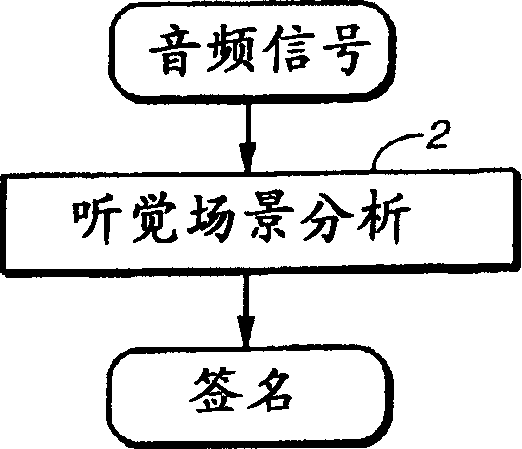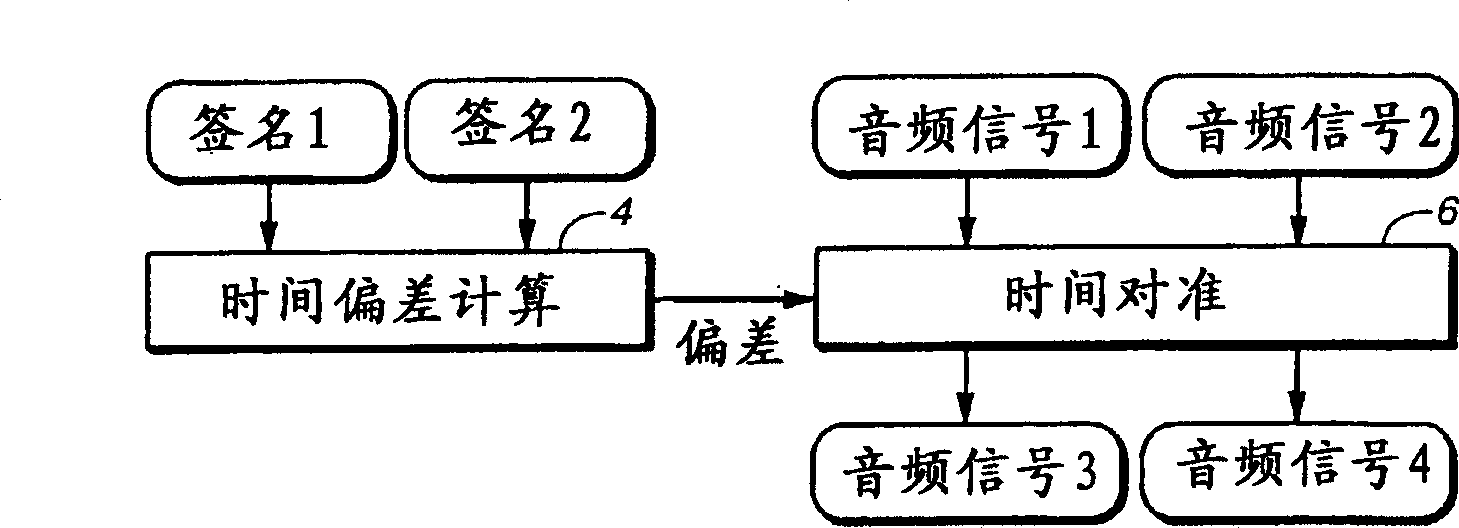Method for comparing audio signal by characterisation based on auditory events
An audio signal and time alignment technology, applied in image communication, speech analysis, speech recognition, etc., can solve the problem of not being able to analyze audio signals
- Summary
- Abstract
- Description
- Claims
- Application Information
AI Technical Summary
Problems solved by technology
Method used
Image
Examples
Embodiment Construction
[0032] In a particular embodiment of the invention, the audio signal is represented by samples processed in blocks of 512 samples, which corresponds to approximately 11.6 msec of input audio at a sampling rate of 44.1 kHz. What is desired is a block length with a time below the duration of the shortest perceivable auditory event (about 20 msec). It is to be understood that aspects of the invention are not limited to this particular example. The principles of the present invention do not require the audio to be arranged into blocks of samples before auditory events are determined, nor do they need to provide blocks of constant length if they are. However, to minimize complexity, 512 fixed-length samples (or some other power of 2 number of samples) are useful for three main reasons. First, it provides low enough latency that is acceptable for real-time processing applications. Second, it is the number of samples to the power of 2, which is useful for fast Fourier transform (FF...
PUM
 Login to View More
Login to View More Abstract
Description
Claims
Application Information
 Login to View More
Login to View More - Generate Ideas
- Intellectual Property
- Life Sciences
- Materials
- Tech Scout
- Unparalleled Data Quality
- Higher Quality Content
- 60% Fewer Hallucinations
Browse by: Latest US Patents, China's latest patents, Technical Efficacy Thesaurus, Application Domain, Technology Topic, Popular Technical Reports.
© 2025 PatSnap. All rights reserved.Legal|Privacy policy|Modern Slavery Act Transparency Statement|Sitemap|About US| Contact US: help@patsnap.com



